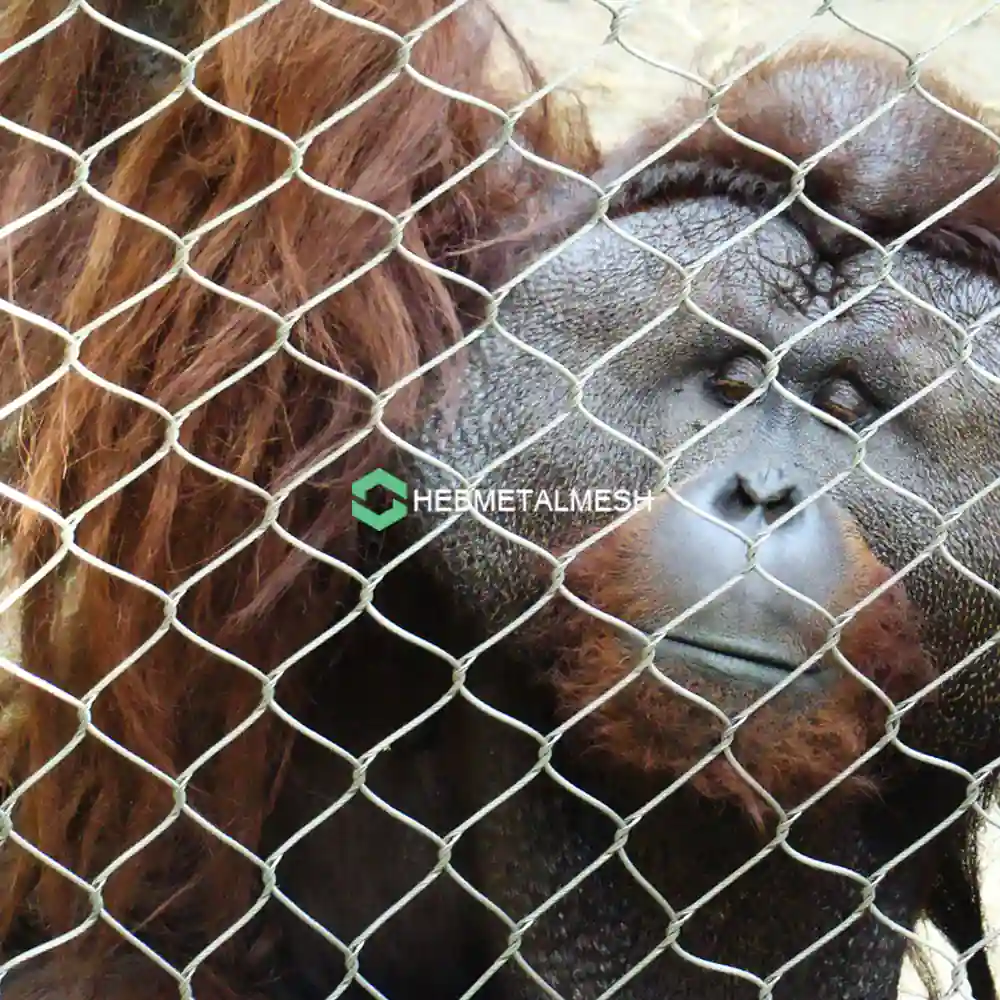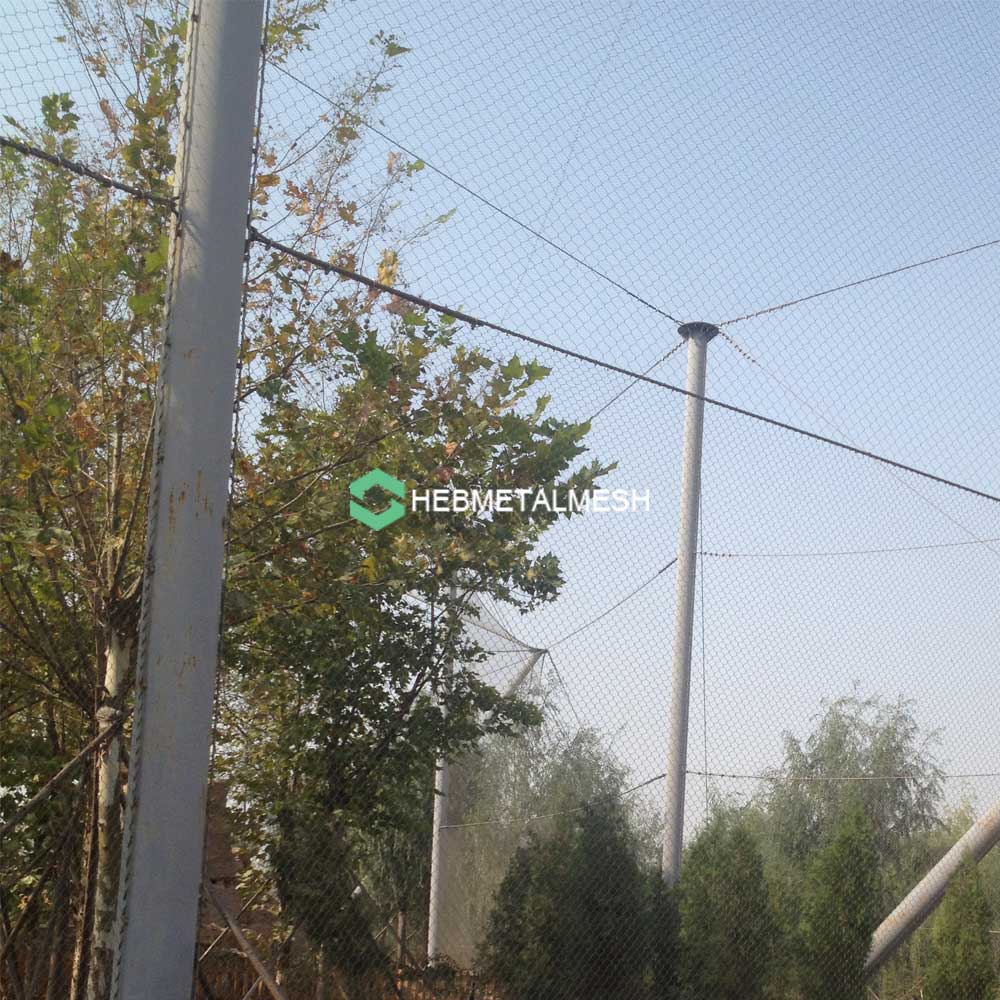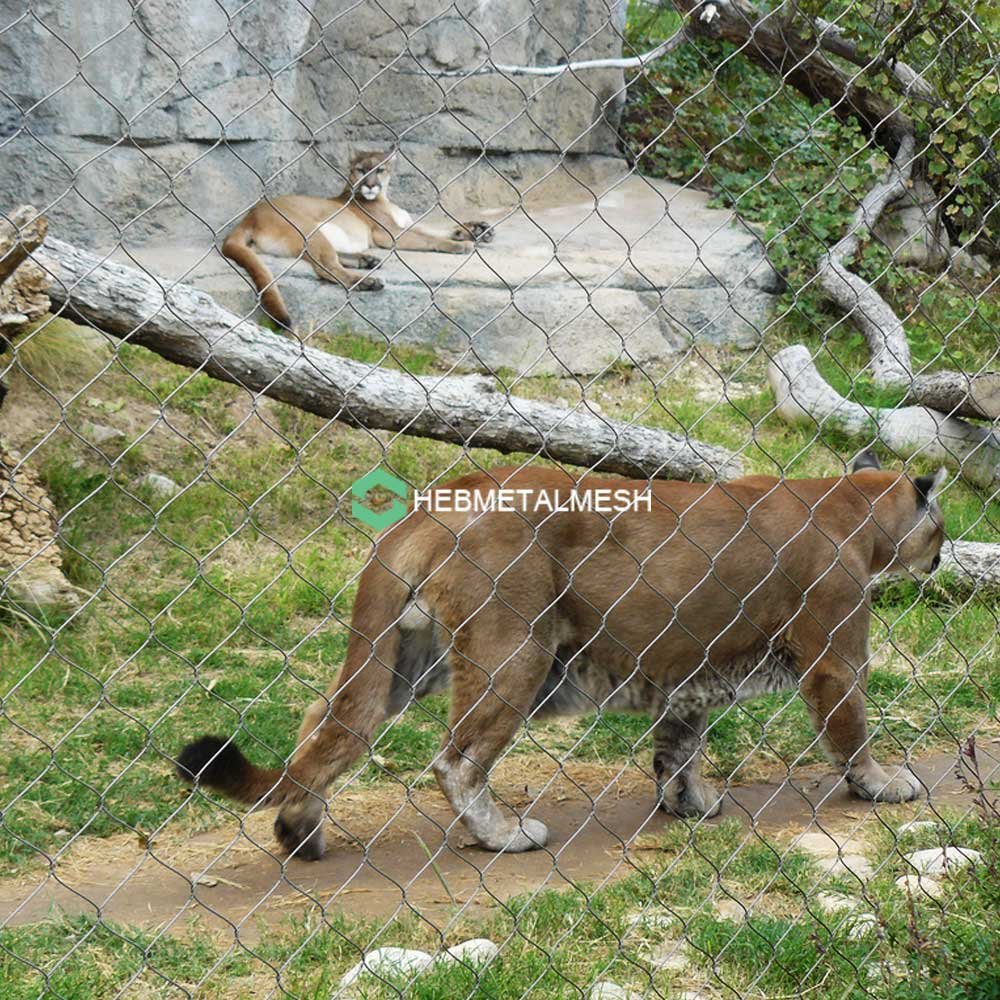Zoos are a popular attraction for people of all ages, offering a chance to see exotic animals up close and learn about their habitats and behaviors. But have you ever wondered how these animals are kept safe and secure within their enclosures? The answer lies in a material called zoo mesh.
In this article, we’ll take a behind-the-scenes look at zoo mesh and how it is used to create safe and effective animal enclosures.
What is Zoo Mesh?
Zoo mesh, also known as animal enclosure mesh or zoo enclosure mesh, is a type of fencing material specifically designed for use in zoos and other animal enclosures. It is made from stainless steel wire that is woven into a mesh pattern, creating a strong and flexible barrier.
The Benefits of Zoo Mesh

Zoo mesh offers several benefits that make it the ideal choice for animal enclosures. These include:
- Durability: Zoo mesh is made from high-quality stainless steel wire, making it resistant to corrosion and wear. This means it can withstand the elements and the wear and tear of animals, ensuring a long lifespan for the enclosure.
- Flexibility: The woven design of zoo mesh allows it to be flexible, making it suitable for a variety of enclosure shapes and sizes. It can also be easily cut and shaped to fit around trees, rocks, and other obstacles within the enclosure.
- Safety: Zoo mesh is designed to be safe for both animals and visitors. The small openings in the mesh prevent animals from escaping, while also preventing visitors from reaching in and potentially harming the animals.
- Visibility: Unlike traditional fencing materials, zoo mesh offers a clear view of the animals within the enclosure. This allows visitors to see the animals up close without any obstructions, creating a more immersive experience.
How is Zoo Mesh Used in Animal Enclosures?
Zoo mesh is used in a variety of ways to create safe and effective animal enclosures. Here are some of the most common uses:
Aviaries

Aviaries are large enclosures designed for birds, allowing them to fly and move freely within a natural environment. Zoo mesh is often used to create the walls and roof of aviaries, providing a secure barrier while still allowing birds to fly and perch on the mesh.
Primate Enclosures
Primate enclosures are designed to mimic the natural habitats of monkeys, apes, and other primates. Zoo mesh is used to create the walls and ceilings of these enclosures, allowing the primates to climb and swing without the risk of escape.
Big Cat Enclosures

Big cats, such as lions and tigers, require large and secure enclosures to keep them safely contained. Zoo mesh is often used to create the walls and roofs of these enclosures, providing a strong barrier that can withstand the strength and agility of these animals.
Reptile Enclosures
Reptile enclosures are designed to provide a safe and natural environment for snakes, lizards, and other reptiles. Zoo mesh is used to create the walls and ceilings of these enclosures, allowing for proper ventilation and natural sunlight while keeping the reptiles contained.
How is Zoo Mesh Installed?
Installing zoo mesh requires specialized knowledge and equipment. Here are the basic steps involved in installing zoo mesh for an animal enclosure:
- Measure the enclosure: The first step is to measure the perimeter of the enclosure to determine how much zoo mesh will be needed.
- Prepare the posts: The posts that will hold the zoo mesh in place must be securely anchored into the ground. This may involve digging holes and pouring concrete to create a strong foundation.
- Install the top and bottom rails: The top and bottom rails are installed first, providing a framework for the zoo mesh to be attached to.
- Attach the zoo mesh: The zoo mesh is then attached to the top and bottom rails using specialized clips or hog rings.
- Secure the sides: The sides of the zoo mesh are then secured to the posts using additional clips or hog rings.
- Trim and finish: Any excess zoo mesh is trimmed and the edges are finished to create a clean and professional look.
Real-World Examples of Zoo Mesh in Action

Zoo mesh has been used in a variety of animal enclosures around the world. Here are some real-world examples of zoo mesh in action:
San Diego Zoo
The San Diego Zoo is home to over 12,000 animals from over 680 species. [Data from World Animal Foundation] The zoo uses zoo mesh in many of its animal enclosures, including the orangutan and gorilla exhibits.
Singapore Zoo
The Singapore Zoo is known for its open-concept enclosures that allow visitors to get up close and personal with the animals. Zoo mesh is used in many of these enclosures, including the orangutan and white tiger exhibits.
Taronga Zoo
The Taronga Zoo in Sydney, Australia, is home to over 4,000 animals from over 350 species. The zoo uses zoo mesh in many of its animal enclosures, including the lion and tiger exhibits.
Where Can I Get Zoo Mesh?
Zoo mesh can be purchased from a variety of suppliers, both online and in-store. When shopping for zoo mesh, be sure to look for a reputable supplier that offers high-quality materials and can provide guidance on installation and maintenance.
Conclusion
Zoo mesh is a crucial component of animal enclosures, providing a safe and secure barrier while still allowing for a natural and immersive experience for visitors. With its durability, flexibility, and safety features, zoo mesh is the ideal choice for zoos and other animal attractions around the world.


